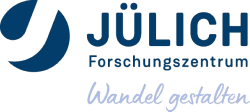This PhD research, part of the EU-funded SOILPROM Project, aims to better understand how pesticide levels change over time and spread from the land surface down into groundwater. The main goal is to improve how we set the lower boundary in soil models, which is important for accurate predictions. These models rely on knowing where the groundwater table is—but in many parts of Europe, this information is missing or unclear.
Objectives and methodology
The research will use a combined soil and groundwater model to study how different underground processes affect pesticide levels in groundwater over time and space. These processes include how water moves, how pollution spreads and breaks down, and how it gets diluted. The research will also look at the influence of soil types, groundwater behaviour, weather patterns, land use changes, and how pesticides are applied.
Use-case Zwischenscholle Aquifer – Jülich, Germany
The study focuses on the Zwischenscholle aquifer near Jülich in Germany. This aquifer is made up of sandy and gravelly layers from the Rhine and Meuse rivers, sitting on top of a waterproof clay layer called Reuver clay. Groundwater flows from southeast to northwest, with a gentle slope. The land above is mostly used for farming and forests. Common crops include sugar beet and winter wheat, with smaller amounts of potatoes, oats, and maize. Because the water table is shallow and farming is intensive, this area is very prone to pesticide pollution. In fact, the aquifer is known to be contaminated with atrazine, a widely used weed killer.
Implications for sustainable land management
The results of this project could help improve how land is managed, especially in areas where groundwater is at risk from pesticide use. By using advanced models and detailed simulations, the research aims to guide better policies and practices to protect water resources.
By focusing on modelling at different scales and using advanced water data, the study tackles important scientific questions and supports the larger goals of the SOILPROM project—promoting sustainable land and water use across Europe.
Authors

Ali Sadrzadeh is a doctoral researcher at the Agrosphere Institute (IBG-3) of Forschungszentrum Jülich, Germany. He obtained an Erasmus Mundus Joint Master’s Degree in Groundwater and Global Change – Impacts and Adaptation (GroundwatCH) from Instituto Superior Técnico (Portugal), IHE Delft (Netherlands), and TU Dresden (Germany). He is currently contributing to the SOILPROM project, where he focuses on simulating water flow and pesticide transport in unsaturated and saturated zones using a coupled soil-groundwater modeling approach.
Prof. Dr. Jan Vanderborght is the Director of the Agrosphere Institute (IBG-3) at Forschungszentrum Jülich, Germany. He also serves as a professor at KU Leuven’s Faculty of Bioscience Engineering. His research focuses on solute transport in soils, pesticide fate, hydrogeophysics, soil evaporation, and plant uptake of water, nutrients, and pesticides. In recognition of his contributions, he was named a Fellow of the Soil Science Society of America (SSSA) in 2024.
Dr. Lutz Weihermüller is a senior researcher specializing in soil physics at the Agrosphere Institute (IBG-3) at Forschungszentrum Jülich, Germany. He is responsible for the soil physical laboratories at IBG-3, focusing on determining soil hydraulic characteristics. His research encompasses soil physics, numerical modeling, hydrogeophysics, carbon turnover, and the fate of organic pollutants. Dr. Weihermüller is also the coordinator of the International Soil Modelling Consortium (ISMC).
